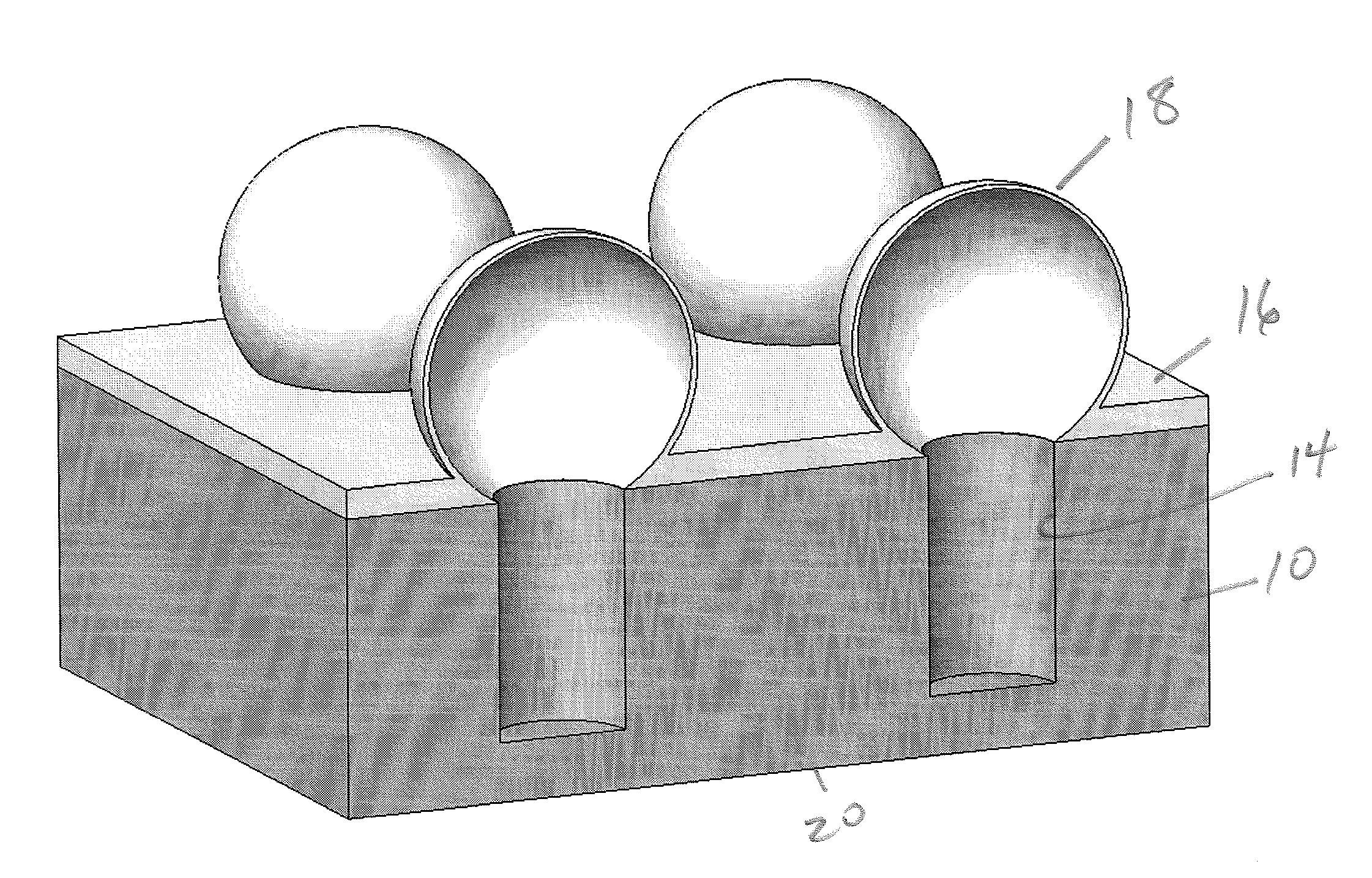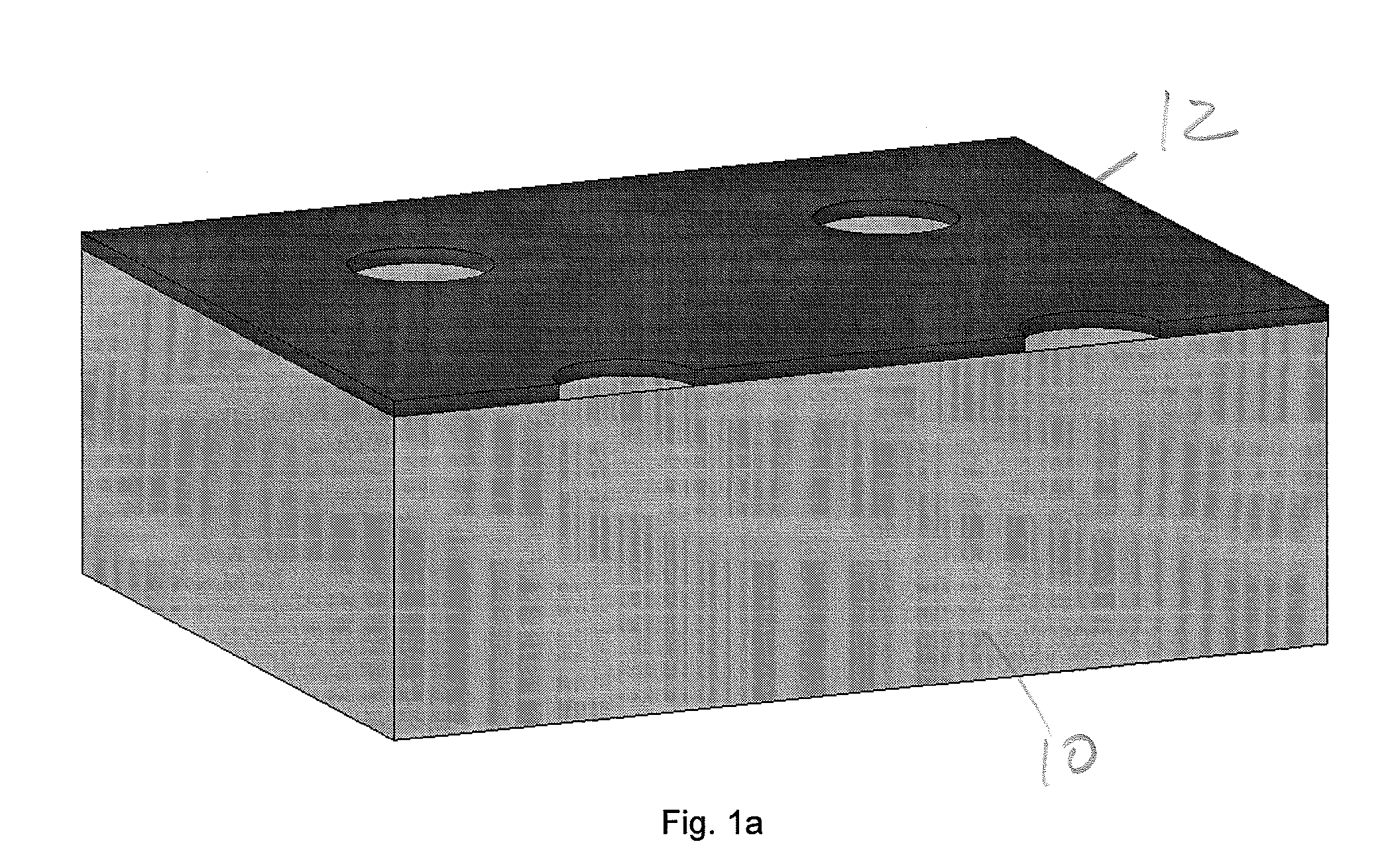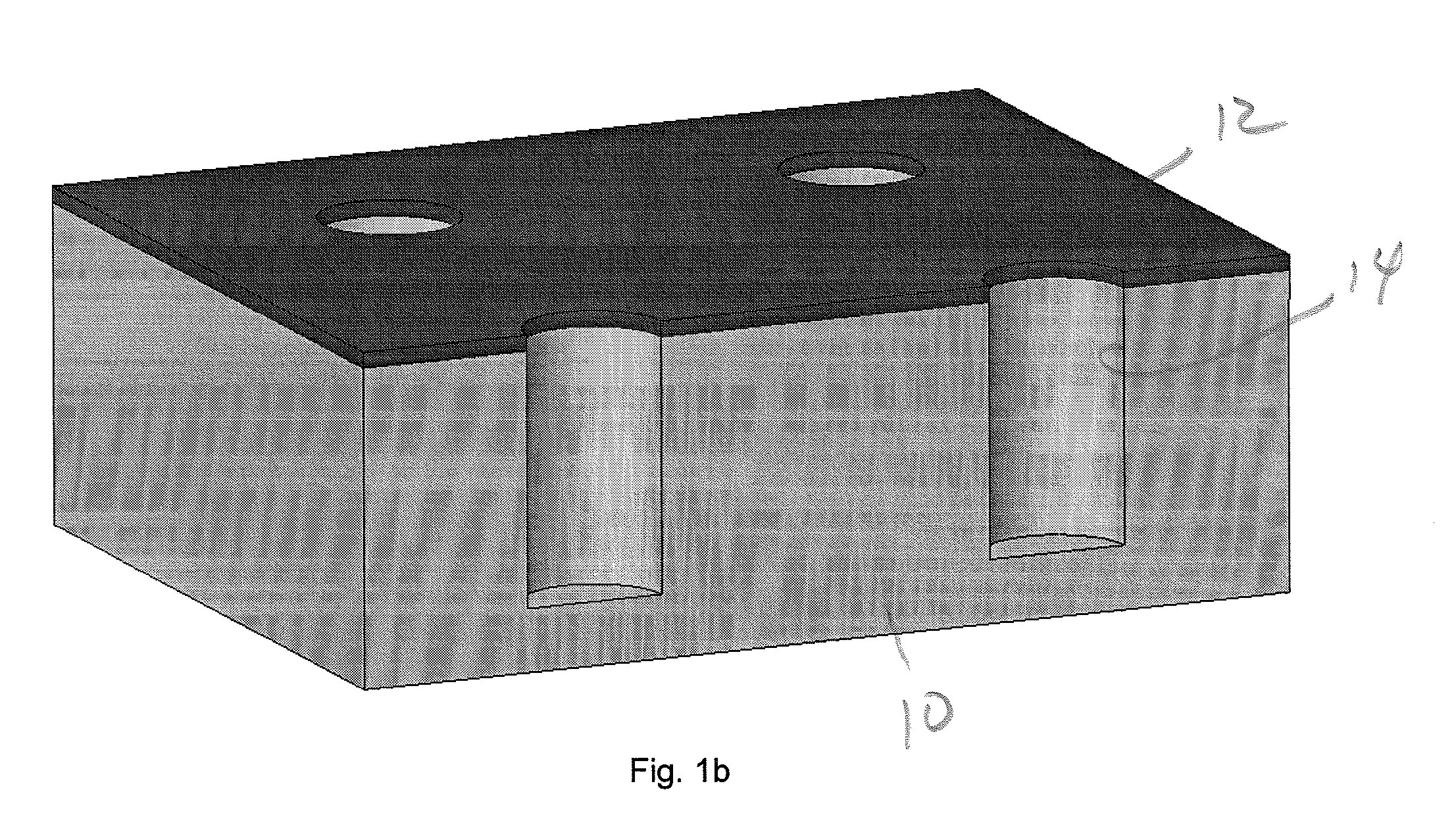Self-inflated micro-glass blowing
a technology of micro-glass and blown glass, which is applied in the direction of glass reforming apparatus, turning machine accessories, drawing profiling tools, etc., can solve the problems of only being filled with certain light gases and the fabricated microspheres are not attached to the substrate, and achieve accurate control
- Summary
- Abstract
- Description
- Claims
- Application Information
AI Technical Summary
Benefits of technology
Problems solved by technology
Method used
Image
Examples
Embodiment Construction
[0044]The illustrated embodiments of the invention disclosed below provide a way of simultaneously forming multiple microscopic glass components on a wafer. These glass-structures are orders of magnitude smaller than what can be achieved using traditional glass blowing techniques. In the illustrated embodiment, the glass spheres are attached to a wafer, allowing for integration with traditional micro-fabrication techniques. Furthermore, the glass structures can be filled with gaseous, liquid, and / or solid materials post fabrication.
[0045]The illustrated embodiment of the invention satisfies the need to implement a microscopic gas confinement chamber. Many specific applications for such a chamber can be considered, e.g. nuclear magnetic resonance gyroscopes, microlamps, and hydrogen capsules for H-vehicles. Other possible applications include micro-lenses, optical switches, laser fusion targets, magnetic shielding when a shielding material is applied on the inside / outside of the sphe...
PUM
| Property | Measurement | Unit |
|---|---|---|
| temperature | aaaaa | aaaaa |
| diameter | aaaaa | aaaaa |
| diameter | aaaaa | aaaaa |
Abstract
Description
Claims
Application Information
 Login to View More
Login to View More - R&D
- Intellectual Property
- Life Sciences
- Materials
- Tech Scout
- Unparalleled Data Quality
- Higher Quality Content
- 60% Fewer Hallucinations
Browse by: Latest US Patents, China's latest patents, Technical Efficacy Thesaurus, Application Domain, Technology Topic, Popular Technical Reports.
© 2025 PatSnap. All rights reserved.Legal|Privacy policy|Modern Slavery Act Transparency Statement|Sitemap|About US| Contact US: help@patsnap.com



